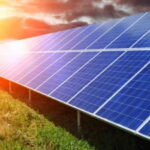GEORGETOWN, Guyana – The government on Wednesday signed an agreement with Norway and the Inter-American Development Bank (IDB) to finance the country’s largest solar project which is set to benefit thousands of Guyanese.
The project supports and fits hand-in-hand with Guyana’s low-carbon ambitions under the new and expanded Low Carbon Development Strategy (LCDS) 2030.
According to Norway’s International Climate and Forest Initiative (NICIF), Guyana will use funds for its low deforestation rates to finance eight large-scale solar energy projects.
In total, the projects will provide 27,000 households with cheap, clean energy – benefiting approximately 70,000 people.
The Guyana Utility-Scale Solar Photovoltaic Programmed (GUYSOL) will invest in eight utility-scale, photovoltaic solar projects totaling 33MWp, with associated 34MWh energy storage systems distributed across three areas in Guyana. Guyana and the IDB will implement the program.
Prime Minister Mark Phillips reminded us that in 2009, Guyana launched one of the world’s first low carbon development strategies, as it set out to show that it is possible to maintain forests while also creating prosperity and opportunities for our people to thrive.
“Norway has been a steadfast partner in our work to find international solutions that support this objective. The world needs far more collaborations like ours – so I hope today’s announcement will motivate others to recognize that progress is possible,” he said on Wednesday.
Norway’s Minister of Climate and Environment, Espen Barth Eide, was impressed by “Guyana’s continued leadership to protect the country’s vital rainforests, and welcomed their decision to use some of the payments for maintaining low deforestation to scale up solar energy generation.”
Guyana boasts unrivalled forest conservation credentials. For context, the country’s forest is over 18 million hectares – the size of England and Scotland combined – and stores over 21 gigatons of carbon.
Guyana has also successfully maintained 85 percent of its forest cover, with a deforestation rate 90 percent lower than other tropical countries. Its forests also store 18 percent of the world’s carbon and contain 2.4 percent of known plant species and four percent of all known animal species.
























































 and then
and then